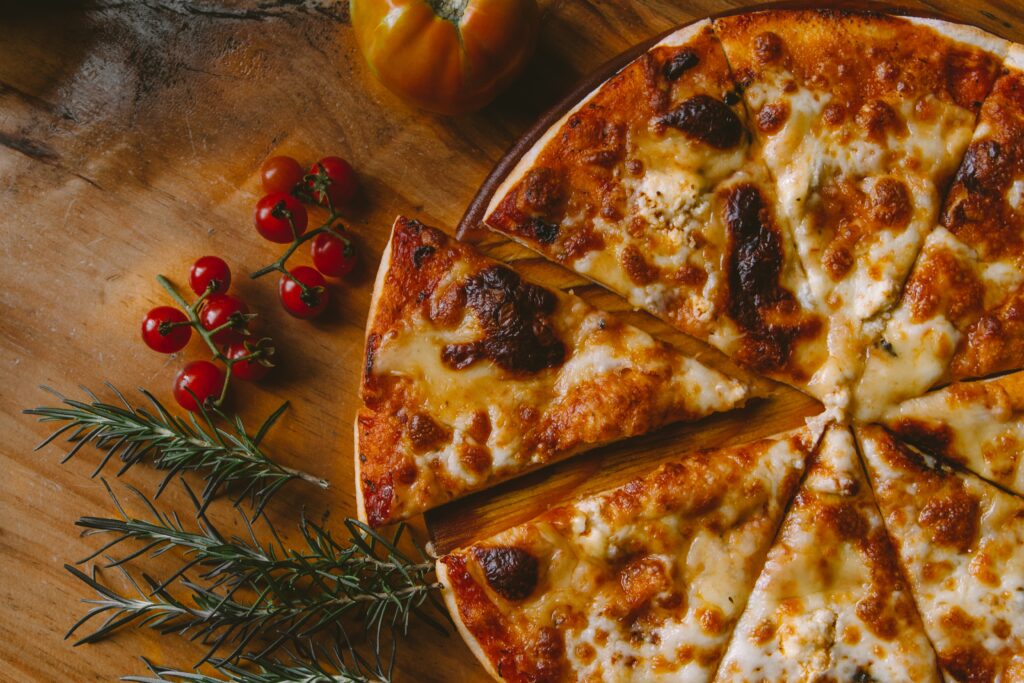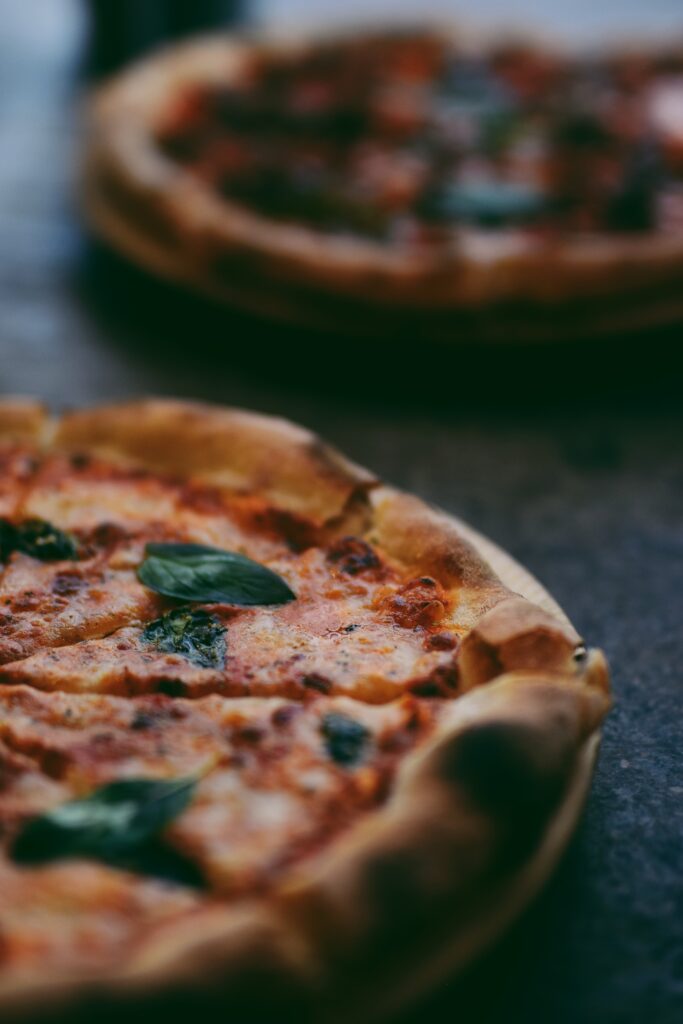In the latest episode of “Unlocking Wood-fired Delights: Discovering the Best Wood for a Pizza Oven,” The Wood Fired Oven Chef discusses the types of wood to use and how to store them. The key is to choose well-seasoned wood that has been split and left for about 12 months, with a moisture content of around 10 percent. Woods like oak, almonds, and olive burn hot and efficiently, but other options like beech, maple, ash, birch, mesquite, hickory, apple, and citrus trees can also be used. The size of the wood is important too, with pieces around 2-3 inches square and 14-18 inches long being ideal. The Chef also provides insights on imparting flavor, starting the fire, and what woods to avoid. Proper storage of the wood is essential, and the Chef recommends keeping it in covered spaces with good airflow for optimal readiness. If you have any questions or comments, feel free to reach out to the Wood Fired Oven Chef.

This image is property of i.ytimg.com.
Click here for the best wood for a pizza oven!
Best Wood for a Pizza Oven
Importance of Well-Seasoned Wood
When it comes to making mouthwatering pizzas in a wood-fired pizza oven, the type of wood you choose plays a crucial role in the flavor and overall cooking experience. One important factor to consider is the seasoning of the wood. Well-seasoned wood is wood that has been dried out for an extended period, typically at least six months to a year. This drying process removes moisture from the wood, making it burn more efficiently and produce a cleaner flame. It’s essential to use well-seasoned wood in your pizza oven to achieve optimal results.
Recommended Woods: Oak, Almonds, Olive
Among the best woods for a pizza oven, oak, almonds, and olive wood stand out as popular choices. Oak wood is widely regarded as a fantastic option due to its high energy output and long, slow-burning properties. It produces a consistent heat, making it ideal for achieving the desired cooking temperature for your pizzas. Almond wood is another excellent choice, known for its sweet and nutty aroma that imparts a unique flavor to your pizzas. Olive wood, with its aromatic smoke and smooth burn, is also highly recommended for pizza ovens. Whether individually or in combination, these woods can elevate your pizza-making experience to new heights.
Other Woods to Try: Beech, Maple, Ash, Birch
While oak, almonds, and olive wood take the top spots when it comes to recommended woods, there are other options worth exploring. Beech wood is a popular choice for its high heat output and clean-burning properties. It lends a delicate smoky flavor to your pizzas. Maple wood, known for its sweet and subtle taste, is also a great contender for your pizza oven. Ash wood, with its light yet distinctive flavor, and birch wood, which burns hot and fast, are additional options to consider. Experimenting with these woods can add variety to your pizza creations and allow you to discover flavors that suit your palate.
Exotic Woods: Mesquite, Hickory, Apple, Citrus
For those looking to infuse their pizzas with unique flavors, exotic woods such as mesquite, hickory, apple, and citrus can provide an exciting culinary adventure. Mesquite wood, commonly used in barbecue smoking, imparts a distinctive, slightly sweet flavor that pairs well with savory toppings. Hickory wood adds a robust and smoky taste that complements heartier ingredients. Apple wood offers a subtly sweet and fruity aroma, enhancing the flavors of both sweet and savory pizzas. Citrus woods, such as orange or lemon, can add a refreshing twist to your pizzas. These exotic woods open up a world of possibilities, allowing you to experiment and create flavor profiles that are truly one-of-a-kind.
Hardwoods vs Softwoods
When selecting wood for your pizza oven, it’s important to distinguish between hardwoods and softwoods. Hardwoods, like oak and almond, are dense and heavy, resulting in longer burn times and steady heat output. They provide a consistent and even heat, ensuring that your pizzas cook evenly and thoroughly. Softwoods, on the other hand, such as pine or cedar, are lighter and less dense. While they may ignite quickly, they tend to burn faster and produce less heat overall. Choosing hardwoods for your pizza oven will give you better control over the cooking temperature and result in a more satisfying pizza experience.
Availability of Different Woods
The availability of different woods may vary depending on your location and accessibility. Oak, being a widely used wood, is relatively easy to find in most areas. Almond wood can also be obtained from orchard suppliers or specialty firewood providers. Olive wood, while popular in Mediterranean regions, may be a bit more challenging to locate depending on your location. Other hardwoods like beech, maple, ash, and birch can usually be found at local firewood suppliers. Exotic woods tend to be less readily available, but you may be able to source them from specialty wood suppliers or online retailers. Consider the availability of different woods in your area when making your selection.
Optimal Size of Wood Pieces
In addition to choosing the right type of wood, the size of the wood pieces you use in your pizza oven also matters. For optimal results, it is recommended to use wood pieces that are roughly 3 to 5 inches in diameter and 12 to 16 inches in length. This size ensures that the wood burns evenly and allows for better control of the fire. Using smaller or larger pieces may result in inconsistent burning and difficulty in maintaining the desired temperature. By adhering to the recommended size, you can achieve a more efficient and enjoyable cooking experience.
Controlling Oven Temperature with Wood Size
The size of the wood pieces you use can directly impact the temperature inside your pizza oven. Larger pieces of wood take longer to ignite and can produce a slower, steady burn, resulting in a lower temperature. Conversely, smaller pieces ignite more quickly, leading to a faster burn and a higher temperature. By varying the size of the wood pieces you add to your fire, you can control and adjust the temperature according to your cooking needs. Experimentation with different wood sizes will help you find the perfect balance and achieve the desired heat to create the perfect pizza.
Flavor Imparted by Different Woods
Each type of wood imparts its unique flavor profile to the food cooked in a pizza oven. Oak wood, for example, offers a distinct, smoky flavor that pairs well with a wide range of pizza toppings. Almond wood introduces a nutty, sweet aroma that can complement both traditional and innovative pizza combinations. Olive wood leaves a gentle, smoky taste that adds a Mediterranean touch to your pizzas. The various hardwoods like beech, maple, ash, and birch each contribute their subtle flavors, enhancing the overall taste experience. Exotic woods such as mesquite, hickory, apple, and citrus add a bold and exciting twist to your pizzas, allowing you to explore new and unexpected flavors.
Starting the Fire with Kindling and Fire Starters
To begin your pizza oven cooking journey, it’s essential to have a well-established fire. This can be achieved by using kindling and fire starters. Kindling, typically small sticks or twigs, serves as the initial fuel to ignite the larger wood pieces. It helps create a strong and steady flame that will sustain the fire. Fire starters, such as newspaper, wax fire starters, or even dry leaves, can be placed beneath the kindling to provide an easy and efficient way to ignite the fire. Using these tools to start your fire ensures a reliable and consistent heat source for your pizza oven.
Click here for the best wood for a pizza oven!
Woods to Avoid in a Pizza Oven
Avoid Pine, Redwood, Fir, and Cedar
While some woods are excellent choices for a pizza oven, there are certain types that should be avoided due to their characteristics and potential drawbacks. Pine, redwood, fir, and cedar are among the woods that should not be used in a pizza oven. These softwoods contain high resin content, which can release soot and potentially impart undesirable flavors to your pizzas. The resin can also lead to excessive smoke, making it difficult to achieve the clean-burning fire needed for perfect pizza results. It is best to steer clear of these softwoods to ensure the best possible cooking experience.
Reasons for Avoiding Softwoods
Softwoods, like pine, redwood, fir, and cedar, are not suitable for pizza ovens for several reasons. Firstly, their high resin content can create a significant amount of smoke and lead to an unpleasant taste in your pizza. Resin can leave a residue on the oven and utensils, making clean-up challenging. Additionally, the sap within softwoods can ignite quickly and cause flare-ups, resulting in inconsistent heat and potential disruptions to your cooking process. Considering these factors, it is recommended to avoid softwoods and opt for hardwoods that offer superior burning properties and cleaner flavor profiles.
Avoid Composite Woods and Treated Woods
Another category of woods to avoid in your pizza oven includes composite woods and treated woods. Composite woods, such as particleboard or plywood, are made by joining together wood fibers or particles with adhesives. These adhesives often contain chemicals and binders that can release harmful fumes when subjected to high heat. Similarly, treated woods, which have been chemically treated for various purposes, may also release toxic substances when exposed to the high temperatures of a pizza oven. To ensure the safety and quality of your food, it is wise to avoid using composite woods or any type of treated wood in your pizza oven.
Potential Health Hazards
Using the wrong type of wood in your pizza oven can not only affect the taste and quality of your pizzas but also potentially pose health hazards. Softwoods like pine, redwood, fir, and cedar contain sap, resin, and other chemicals that can release toxic fumes when burned at high temperatures. Inhaling these fumes can be harmful to your health, causing respiratory issues and other adverse effects. Additionally, composite woods and treated woods may release dangerous chemicals when exposed to heat, posing further risks. To prioritize your health and safety, always choose appropriate and safe woods for your pizza oven.

This image is property of images.unsplash.com.
Storing Wood for a Pizza Oven
Importance of Proper Wood Storage
Proper storage of wood for your pizza oven is crucial to maintain its quality and ensure optimal burning. As wood needs to be well-seasoned before use, it is essential to protect it from moisture. Moisture can lead to mold growth, rotting, and reduced efficiency when burning. By storing your wood correctly, you can prevent these issues and have a readily available supply of seasoned wood for your pizza oven. Proper wood storage also helps maintain its cleanliness, preventing dirt and debris from getting into your oven and potentially affecting the taste of your pizzas.
Storage Options: Underneath the Oven and Additional Storage Space
There are various storage options to consider when it comes to storing wood for your pizza oven. Many pizza ovens come with a built-in storage space underneath the oven itself. This is a convenient and easily accessible location to keep your wood at hand while cooking. If your pizza oven does not have built-in storage, you can utilize additional dedicated storage space nearby. This can be a shed, a covered rack, or a designated wood storage container. Consider the space available to you and choose an option that best suits your needs and allows for easy access to the wood when you’re ready to fire up the oven.
Covered Storage with Good Airflow
When storing wood for your pizza oven, it is important to ensure proper ventilation while protecting it from excessive moisture. A covered storage area that provides good airflow is an ideal solution. This can be a simple woodpile covered with a waterproof tarp or a purpose-built woodshed with a ventilated design. The covering protects the wood from rain or snow, while the airflow helps to prevent the wood from becoming damp and retains its seasoning. By implementing these storage practices, you can maintain the quality and usability of your wood, guaranteeing fantastic cooking results every time you fire up your pizza oven.

This image is property of images.unsplash.com.
Conclusion
Choosing the right wood for your pizza oven can significantly enhance your pizza-making experience. Well-seasoned hardwoods such as oak, almonds, and olive wood provide excellent heat output and unique flavors. Other hardwoods like beech, maple, ash, and birch offer additional options for experimentation. Exotic woods such as mesquite, hickory, apple, and citrus add an exciting twist to your pizzas. It is important to avoid softwoods, composite woods, and treated woods to ensure a safe and superior cooking process. Proper wood storage, including covered storage with good airflow, maintains the quality of the wood and allows for optimal burning. By considering these factors and tips, you can unlock the full potential of your pizza oven and delight your taste buds with delicious homemade pizzas. Say goodbye to ordinary oven-cooked pizzas and embrace the flavorful world of wood-fired pizza perfection!